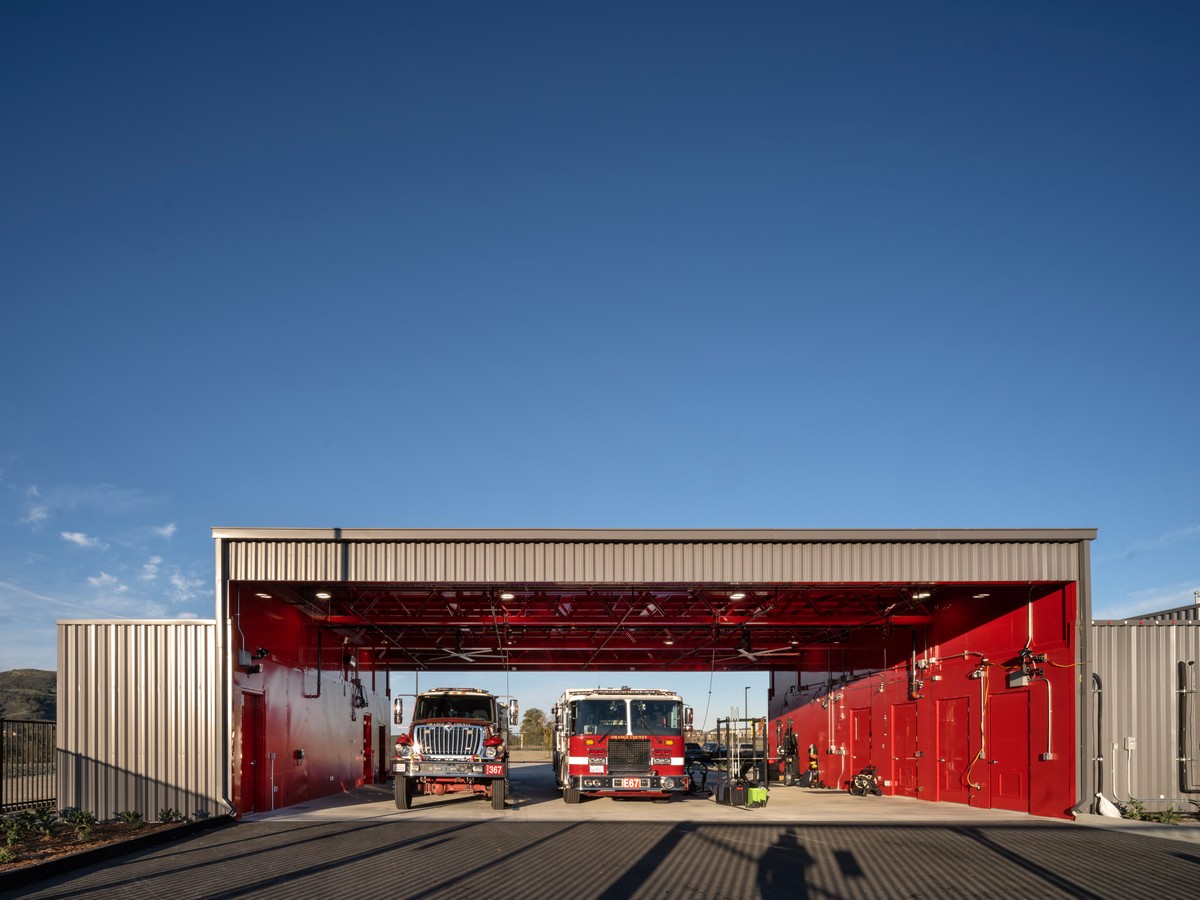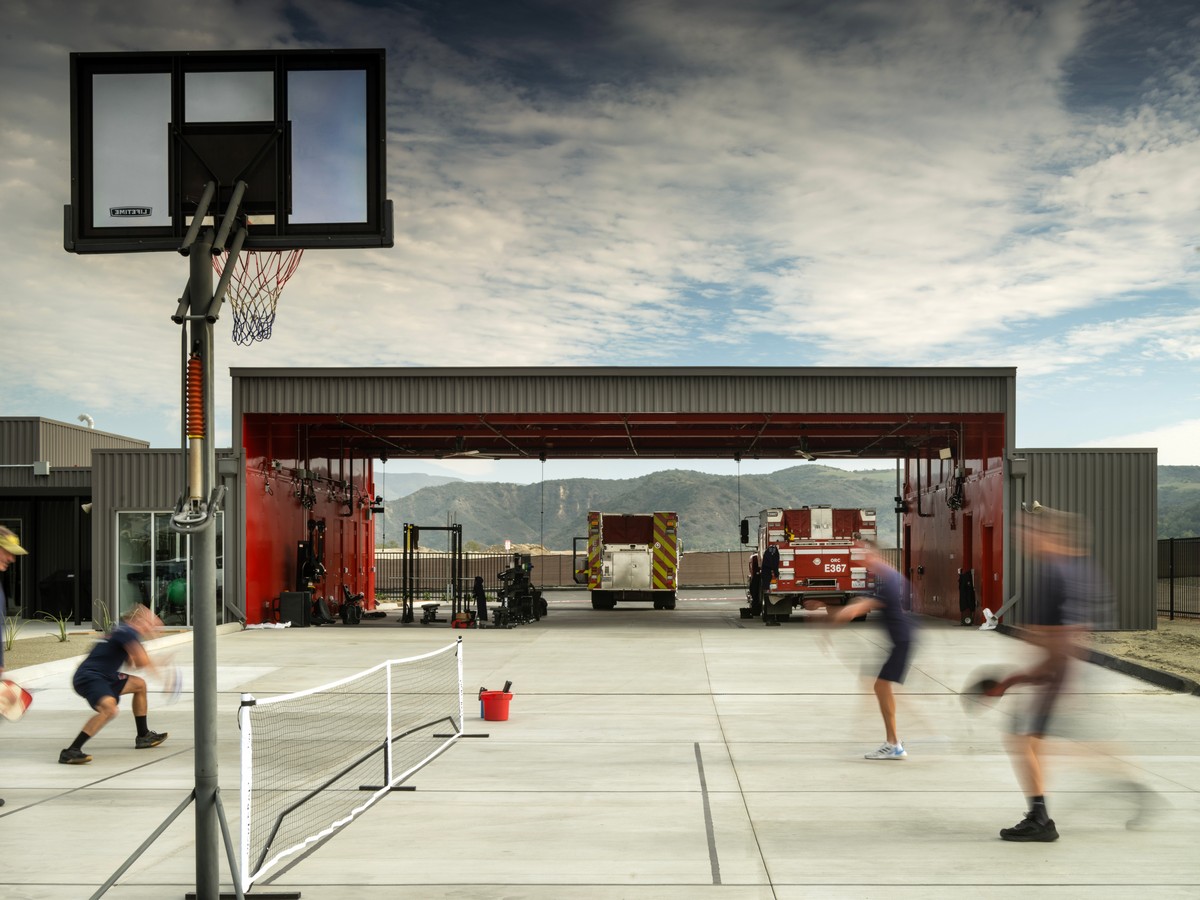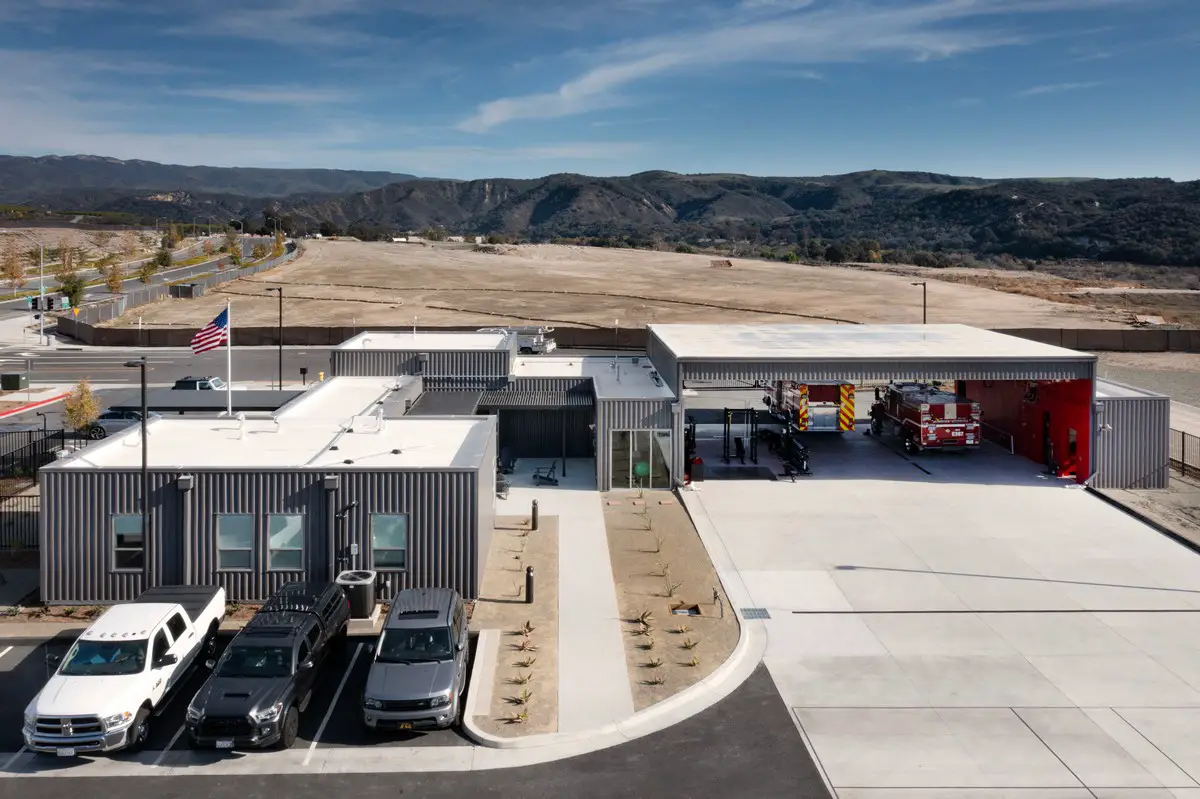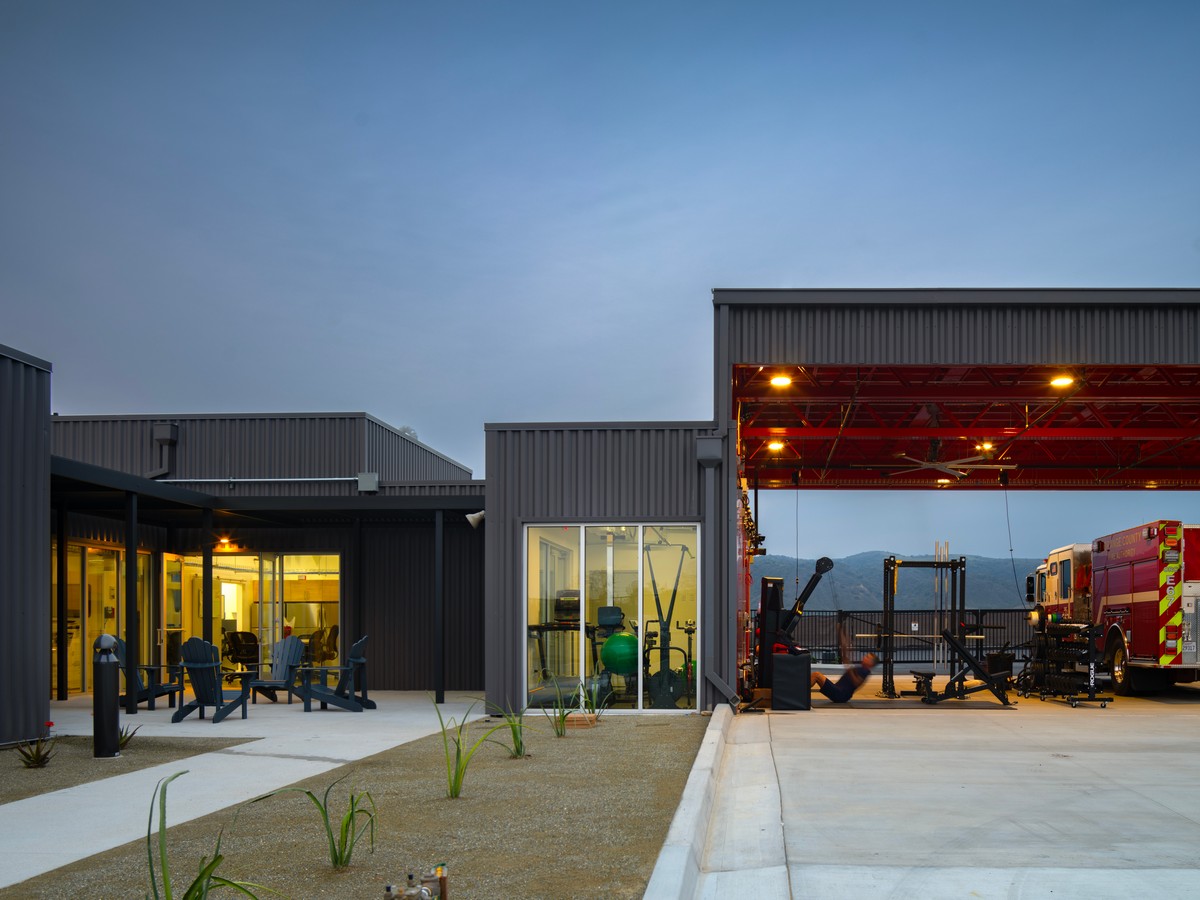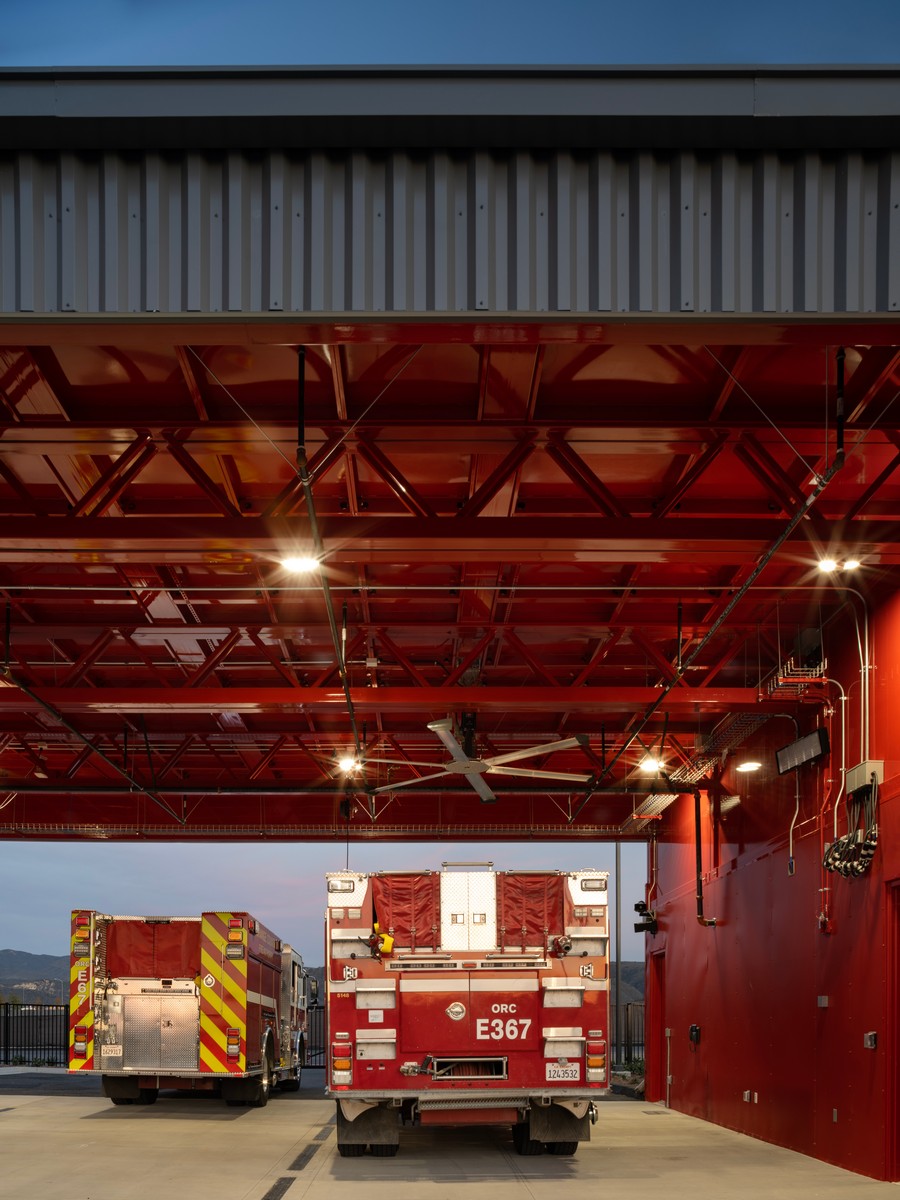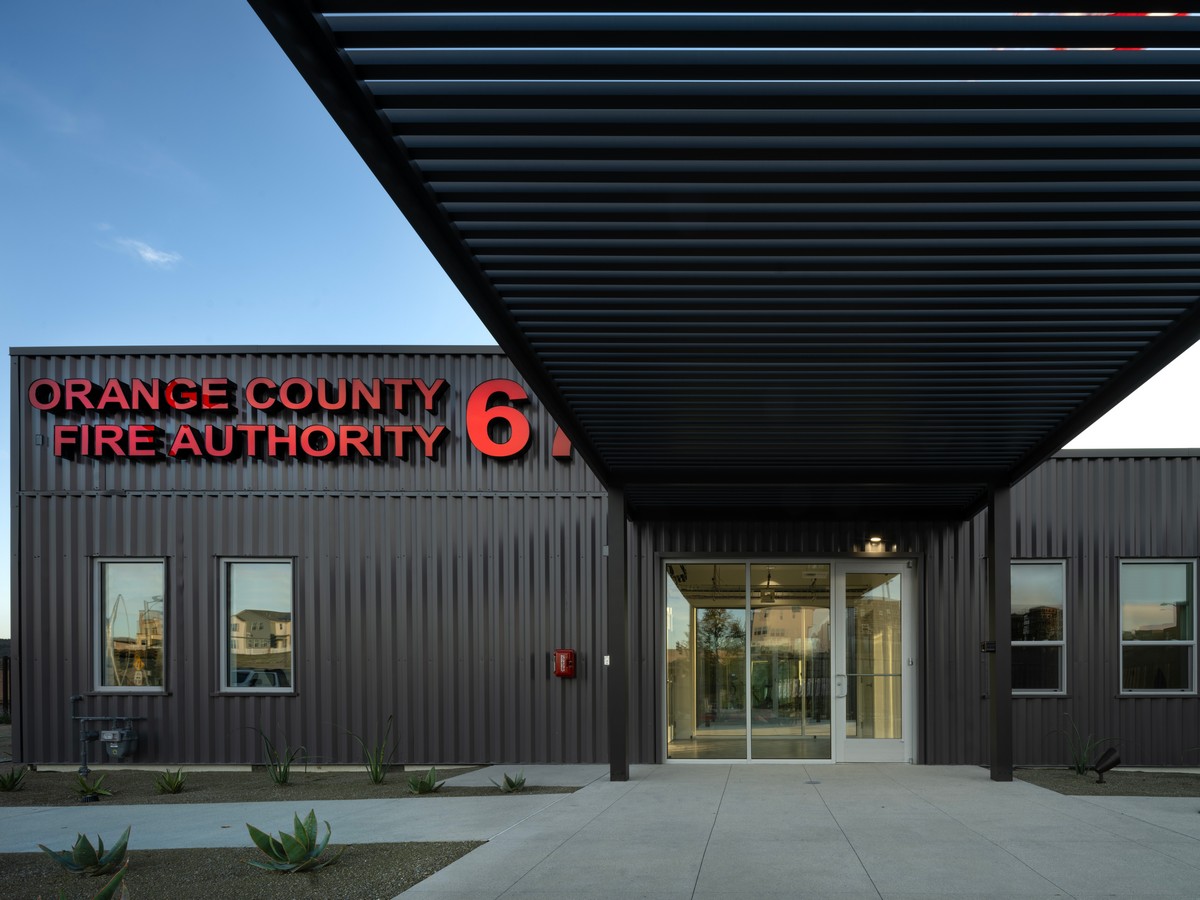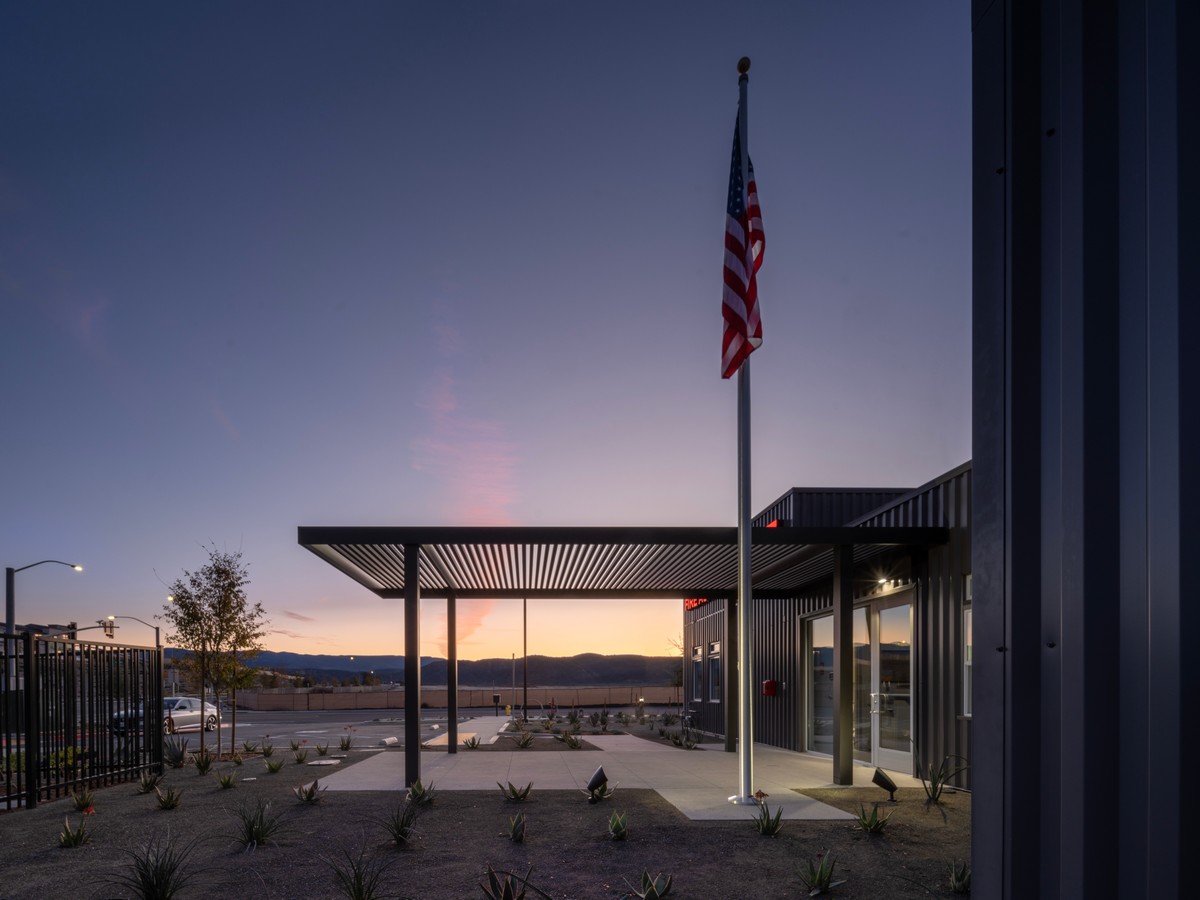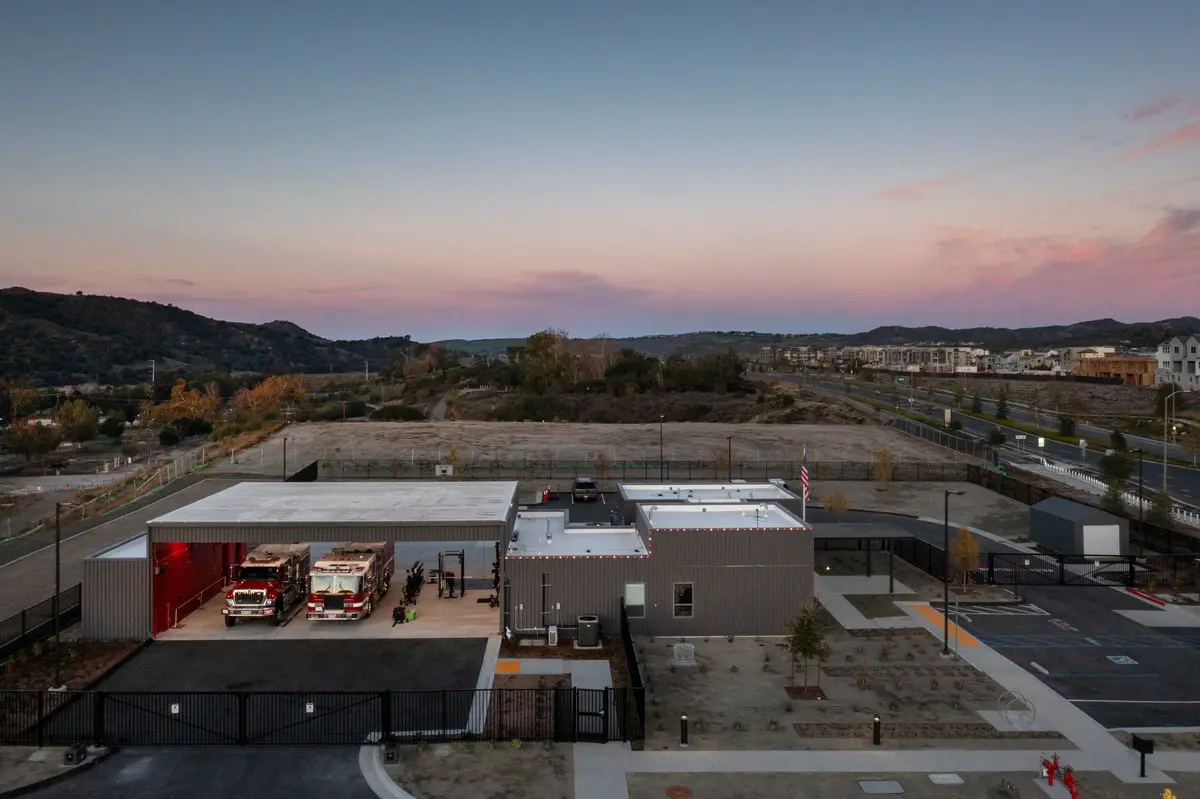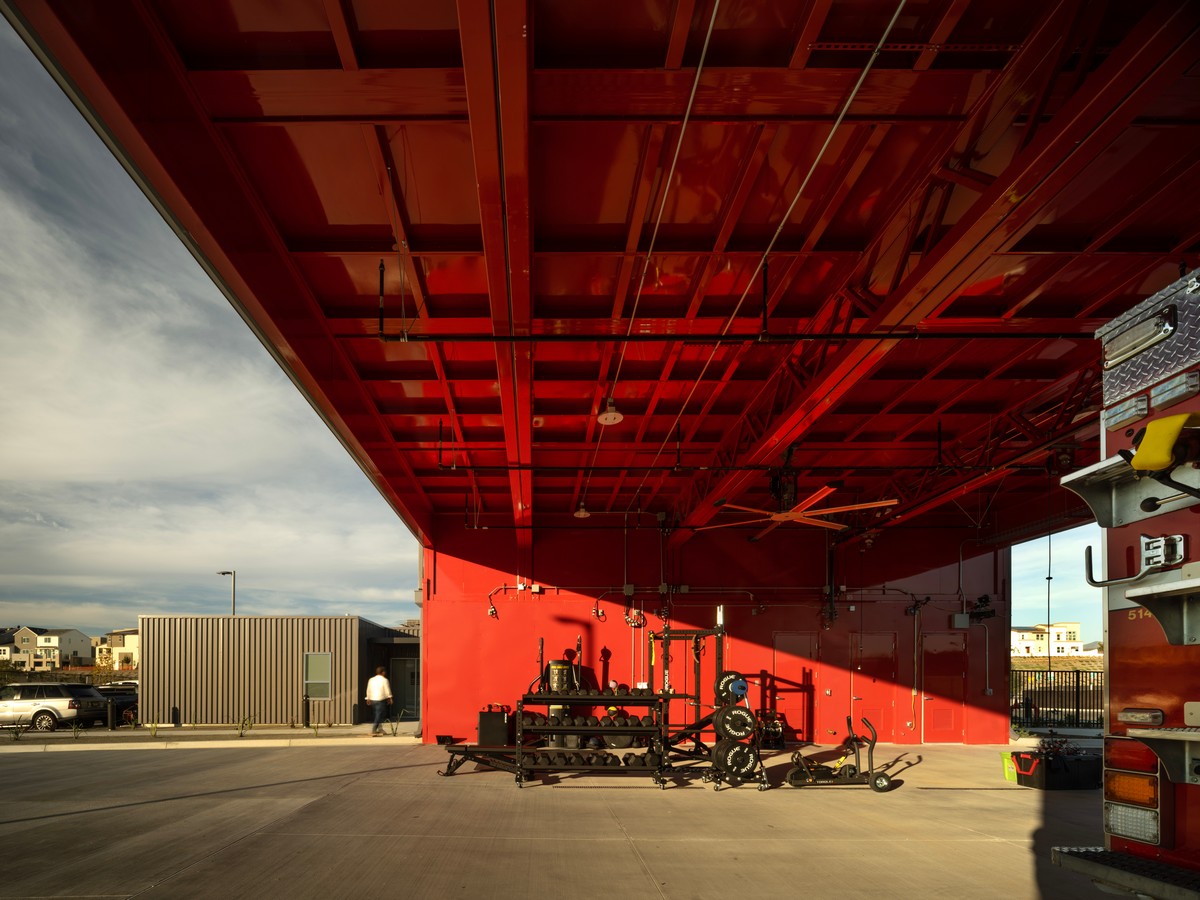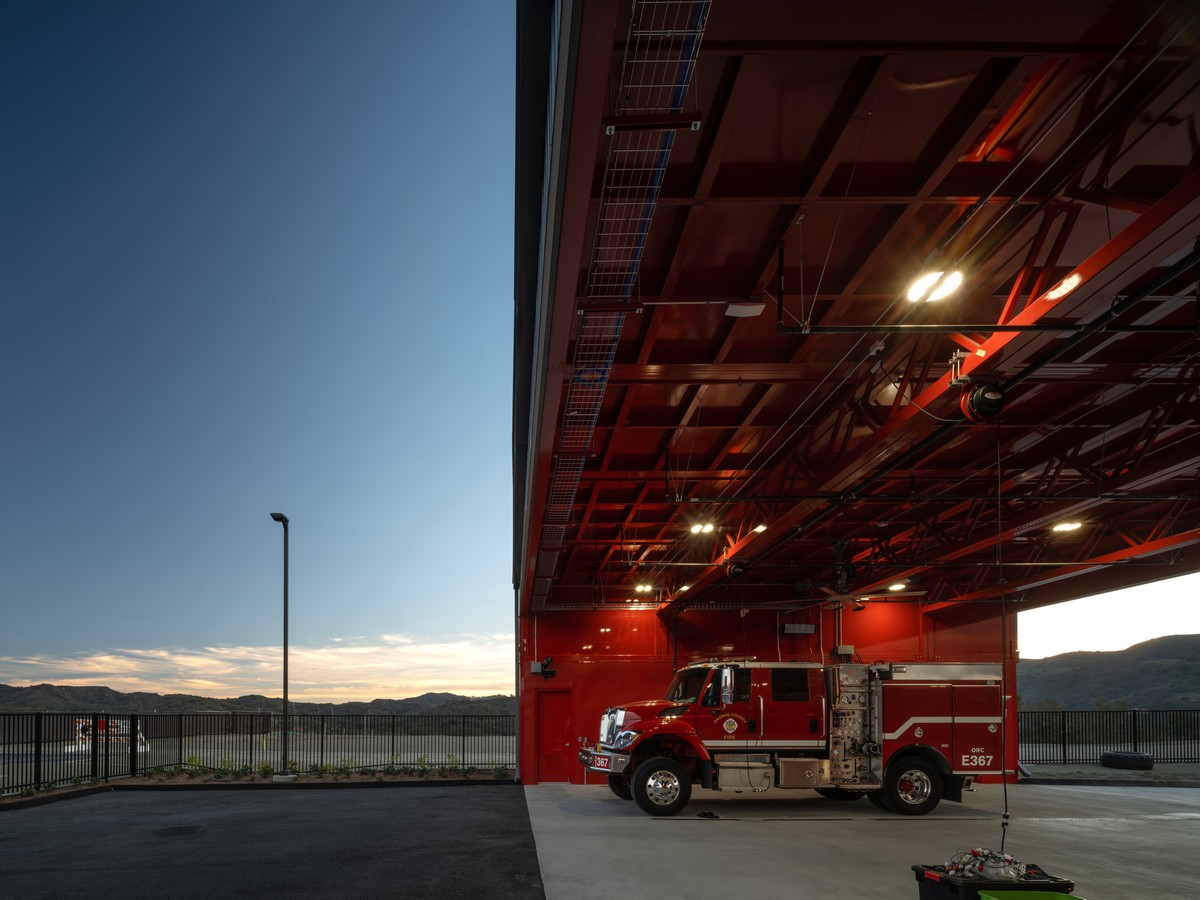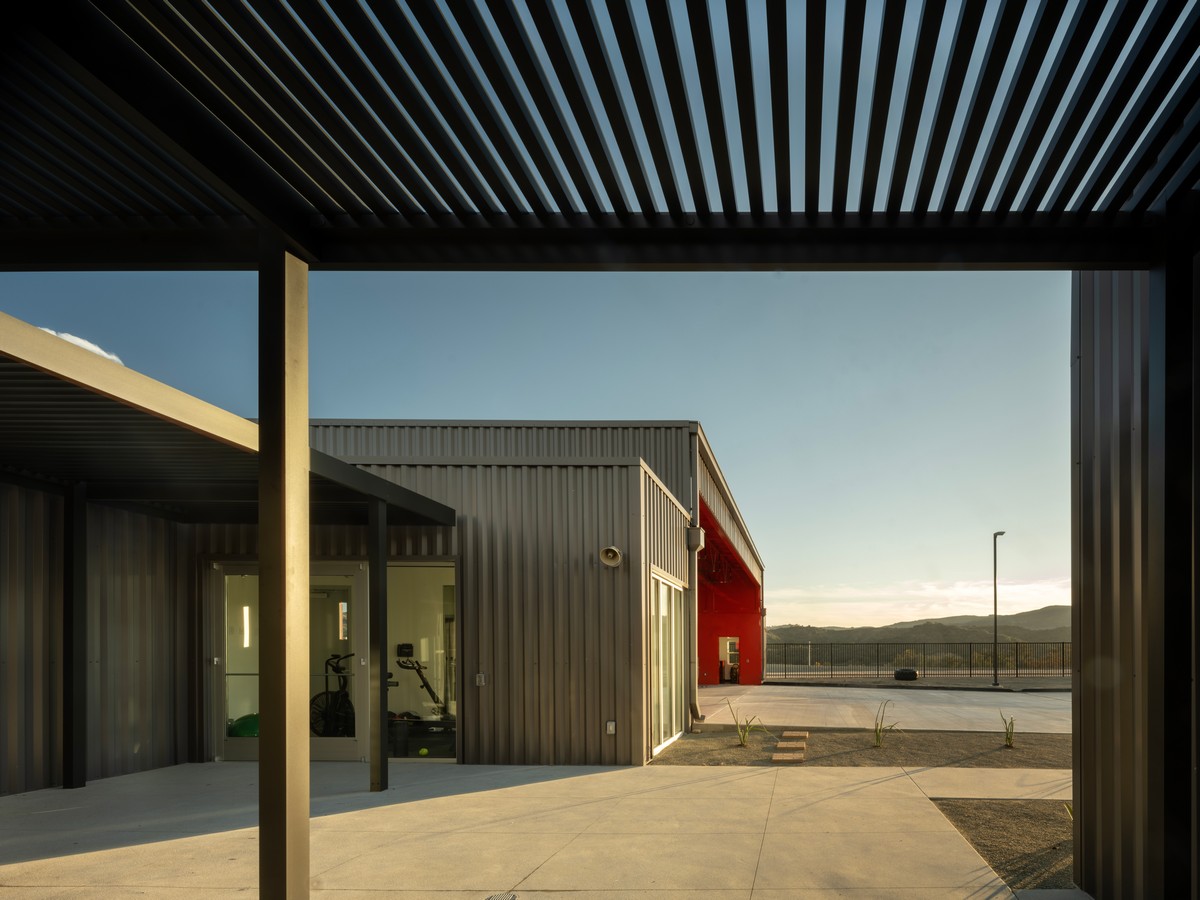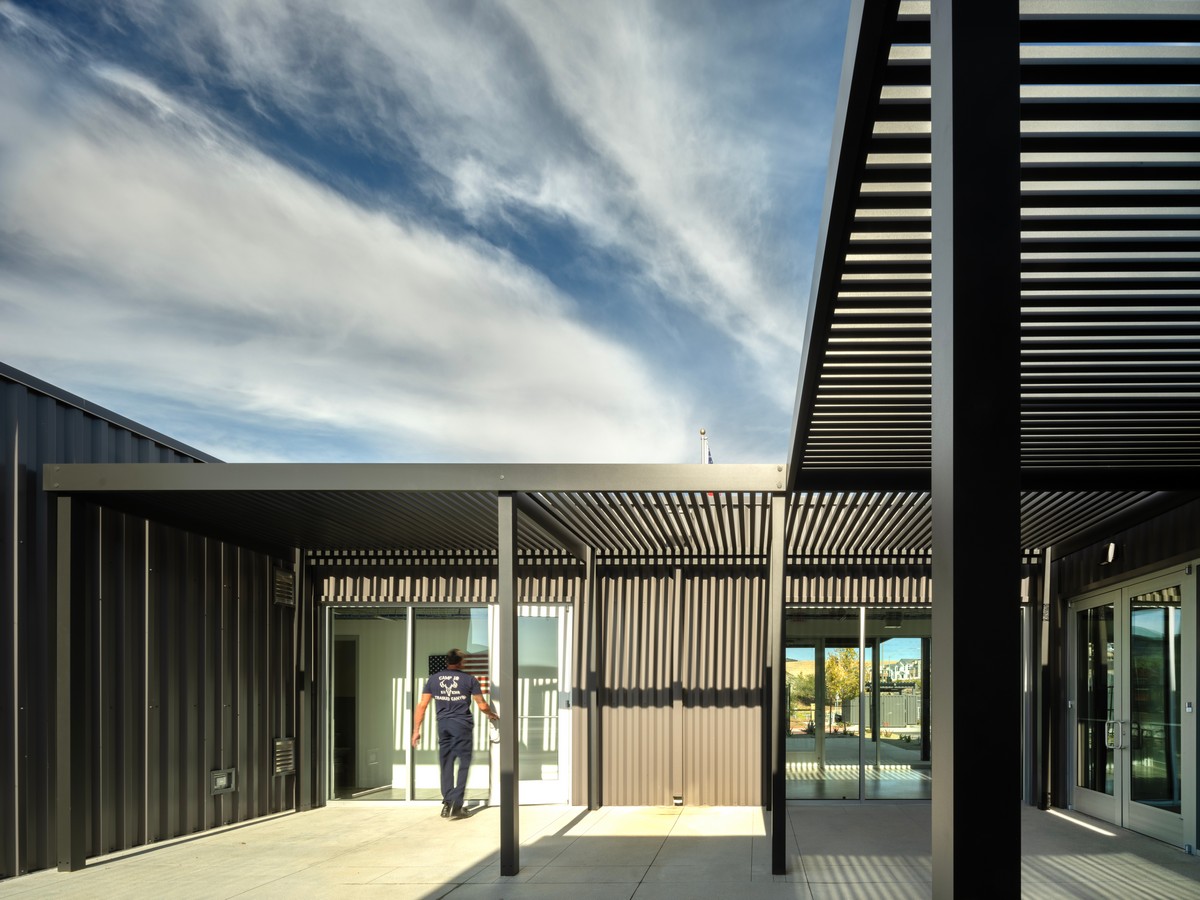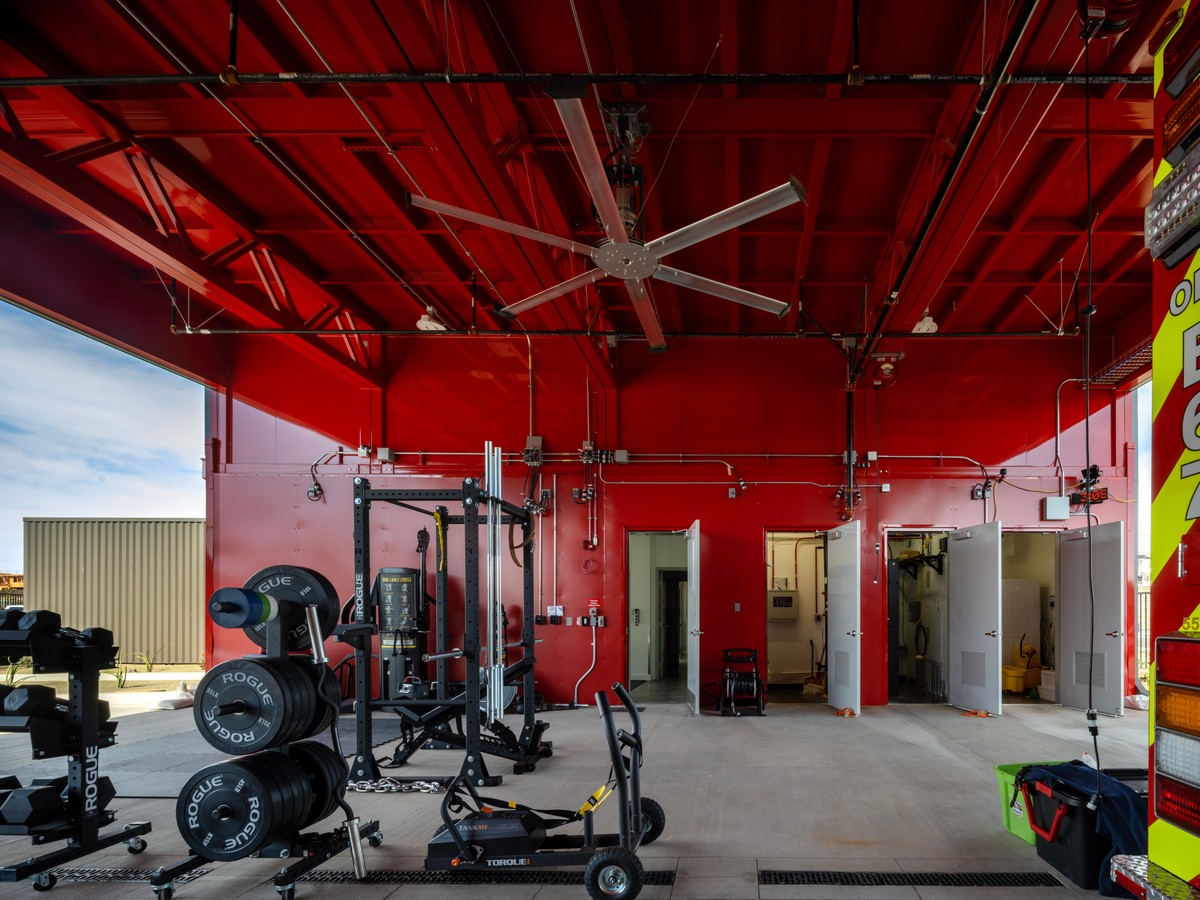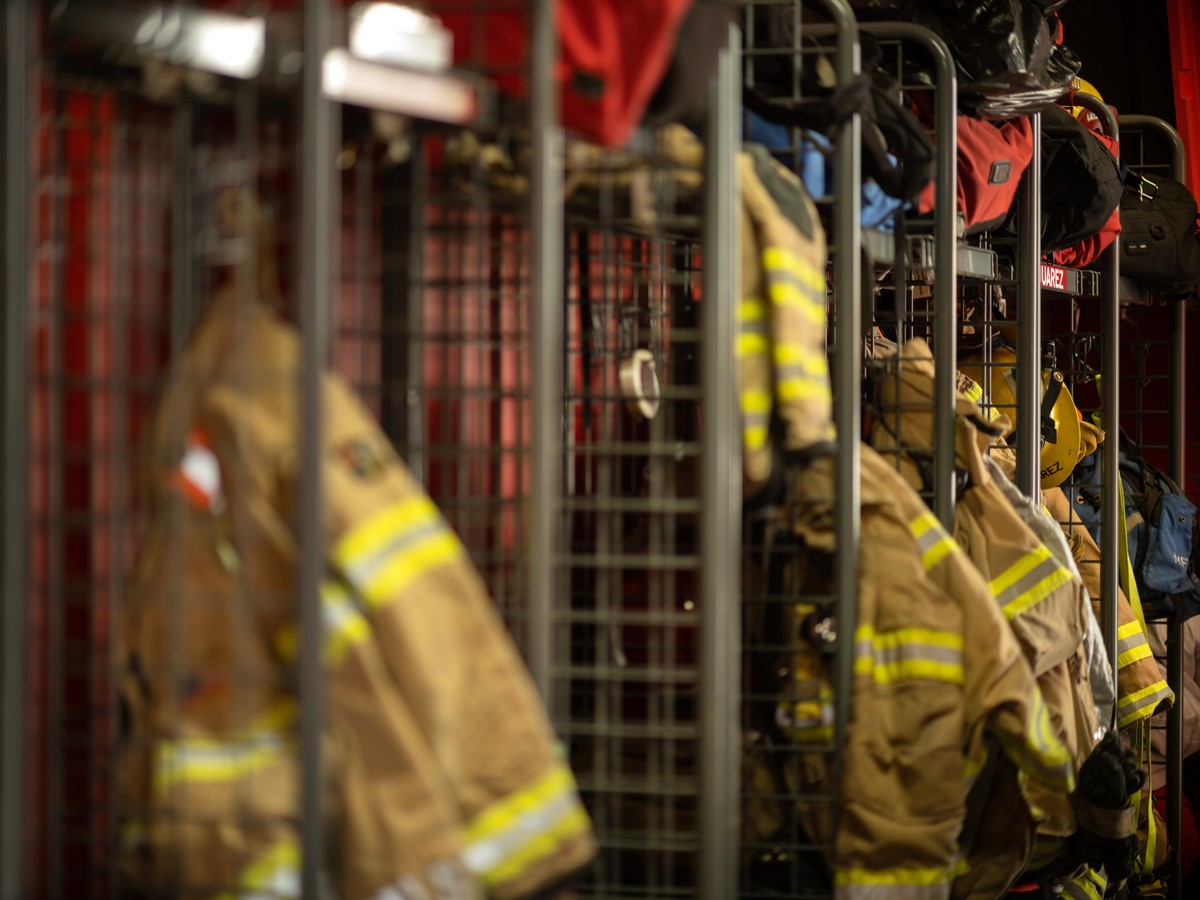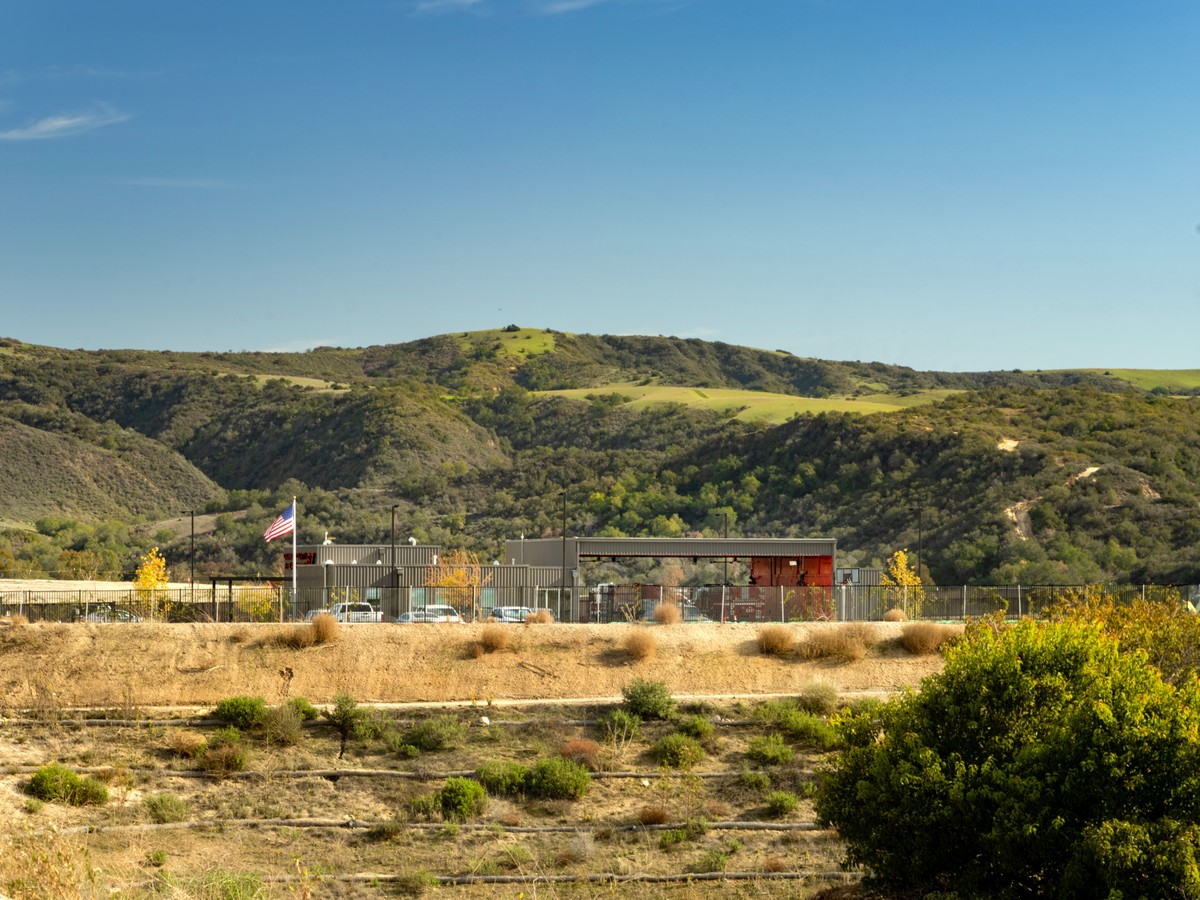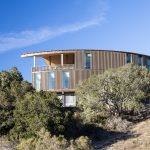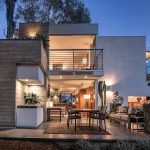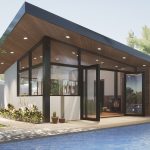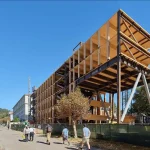Fire Station 67, Mission Viejo real estate California, Modern CA building development, USA architecture photos
Fire Station 67 in Mission Viejo, California
6 March 2024
Design: Wittman Estes
Location: 31544 Cow Camp Road, Mission Viejo, CA 92694, California, United States
Photos: Nic Lehoux
Fire Station 67, USA
Built for offsite fabrication and rapid assembly, Fire Station 67 has a future that can reinvent itself
Fire Station 67 is designed in direct response to the climate crisis, the increasing threat of wildfires, and the needs to the Rancho Mission Viejo community. Prefabricated off-site and assembled from 10 modules, the 4,667-square-foot fire station is a modular design with the ability to reconfigure the structure into something new in the future. The rapidly deployable steel cubes are designed for re-use, speed, and resilience. The prefab structure is clad in fireproof, corrugated steel siding. Technology and rapid manufacturing are leveraged to maximize construction speed and efficiency.
A connection to history and place
Fire Station 67 sits on Cow Camp Road, next to Rancho Mission Viejo’s (RMV) ranching operations.
Originally spanning from the Pacific Ocean to the San Bernadino Mountains, RMV now encompasses nearly 23,000 acres, 17,000 of which is permanent open space watershed ecosystem, managed as The Nature Reserve. Fire Station 67 sits on a ridge above Trampas Canyon and the original historic ranching operations, which hosts one of California’s highest profile professional rodeos.
The climate crisis has brought devastating wildfires to California, burning millions of acres and destroying tens of thousands of homes each year. The functionally driven site plan and configuration of the building zones give firefighters rapid access to serve public safety, and also feel privacy, calm, and connection to the wide open views of Trampas Canyon.
Designing for the future now
Interim fire stations are typically built as generic, interior focused boxes. “We wanted to break open the box and look beyond” says Matt Wittman, the lead architect at Wittman Estes. As single use programs box buildings can have shorter lifespans, built with inexpensive and non-durable materials. These short-term stations end up in landfills, adding to the waste stream and accelerating climate change. Wittman Estes and the Fire Station 67 team wanted a more expansive future for this interim fire station.
Fire Station 67 is built on a modular system that allows for future relocation and reconfiguring. The sturdy and durable steel modules are easily transportable, and re-arranged for future uses, extending the lifespan of the buildings, and accommodating flexibility to meet what the future may bring.
The fire station is built on a modular system of rigid grids of structural steel frames, with ‘pick pockets’ for infinite rearrangements. Wittman Estes created an architectural kit of parts – each one sized and optimized for rapidly deployable transport and fast assembly. “This is the future, there is no doubt,” says Jim Holas, Director of Architecture for RMV.
12’ wide modules and 30’ long steel trusses create a rhythm of steel and aluminum. Steel is tough and non-combustible, and the most efficient structural material from a weight to strength ratio. The steel cubes of this kit-of-parts approach are easily placed using a mobile, telescoping forklift within a matter of hours.
By designing for offsite fabrication and rapid assembly, Wittman Estes streamlined the design, documentation, and permitting process so construction could begin less than a year after the design process began. This process allowed for parallel site development work in California and the factory construction in Nevada, resulting in a six-month total construction timeline.
The symbiotic nature of the modular structure is its ability to adapt and serve the community in which it’s placed and to be reconfigured in the future when the community’s needs change. “How can we keep a building in use for as long as possible?”, asked Matt Wittman. Fire Station 67 will be re-purposed and given a second life in ten years when it will become an environmental learning center for Rancho Mission Viejo, California.
Form follows function
The flat topography of the site is punctuated with the fire station building, echoing the rising hills in the distance. The site plan is ringed by a circular drive to service rapid entry and exit to the apparatus bay by the fire trucks. The program includes a vehicle bay for two fire trucks, six sleeping rooms, a day room, kitchen/dining room, dispatch/workspace, and a captain’s office.
The 12-foot modules are assembled around a semi-protected central courtyard which provides shaded space for firefighters to recharge and relax. An aluminum trellis in the courtyard protects the space from the hot sun. Rhythmic glazing reinforces a rational exterior and revealing the functionality of the interior. A steel trellis welcomes the visitor and draws them into the heart of the building underneath the large illuminated red letters of the “Orange County Fire Authority 67”.
The muted exterior color palette creates a unified expression while drawing attention away from the structure and towards the verdant ecosystem beyond. The compact plan and simple form optimize efficiency and the future thinking that each space can be reinvented for a different future purpose. The plan adjacencies support an environment for both work, rest, and camaraderie between the firefighters.
The interior of the building is designed with an awareness for function. The north facing public entry, captain’s office and dispatch room look toward the neighborhood. The more active areas, including break room, kitchen, and fitness rooms face east toward fire trucks and the rising sun. The sleeping rooms and bathrooms are located in a quiet zone in the west, away from the noise and activity. The fourth zone is the apparatus bay to the south, which completes a courtyard and courtyard layout. Instead of fitting functions inside a single box, the open distribution of modules follows the flow of firefighter’s daily routines—form follows function.
The interior spaces are optimized for firefighters to recharge and relax by toning down in detailing and color for a tranquil palette. In contrast, the active bay where the firetrucks are parked and maintained is painted with a bright red, mimicking the flurry of activity that happens in the bay. “The firetruck red color can be seen from a distance,” says Brandon Patterson of Wittman Estes. “Signaling it’s function, extenuating its form, and serving as a beacon to the community and feel protected.”
Typical fire station garages have poor indoor air quality due to heavy exhaust from fire trucks which remain running inside an enclosed space. Normally this is overcome by energy intensive and expensive mechanical systems to exhaust the toxic air outdoors. Wittman Estes designed an open-air apparatus bay to bring in fresh outside air and eliminate the need for large exhaust machines. The bay also serves as a multi-use space—sheltering the fire trucks while also providing an airy outdoor pavilion for exercise equipment, gatherings, and events.
The interior reinforces the simplicity and efficiency of the modular structure, keeping each element neutral in tone and material while still guiding the sunlight into the heart of the building. Light gray floors, white walls, and simple wood cabinetry create a clear and uncluttered interior encouraging the exposed structure, wiring, and plumbing emphasize the working nature of the building.
Community based reconfigurations
Modular design allows for the building to have multiple life cycles. It can be built for emergency response services and then re-configured for more community-based uses. It combats material waste issues by reconfiguring to a community’s need at different times during its lifespan. It also alleviates inefficiency in construction by adapting to on-site time constraints as prefabricated design can be built off site and then assembled at appropriate time.
In 10 years, the layout will become something new and respond to the climatic specifics of a new site. It will have a new solar exposure to the heat of the sun, the winds, and views to the hills. The kitchen and break rooms will become public event spaces, and the sleeping rooms will become private offices and rooms for work and environmental research on flora, fauna and local ecology. The trellis will be dis-assembled and re-configured to define the perimeter of a new outdoor terrace.
In 50 years, the modules can adapt to any future, as their steel, modular form are universal design, defined by the most basic elements of human routines. Sleeping rooms can be for permanent dwellings, live/work spaces, or any other use of a single human. Break rooms and fitness rooms can be ganged together to create 12’, 24, 36’, or 48’ wide rooms, supporting gathering spaces for varying numbers. The modules are a universal language of space, sized to a variety of comfortable widths and divisions that have infinite possible configurations in a virtuous cycle of future uses.
In its simplest form, a fire station functions as a dwelling with a oversized garage. At its most complex, fire stations embody the values of its community and functions as a high technical operation for emergency response. Combining modular design with this intent, Fire Station 67 symbolizes the future of civic buildings – reflecting the needs of the community, the emergency responders, and the climate of the site itself.
Fire Station 67 in California, USA – Building Information
Project Team
Architect: Wittman Estes – https://www.wittman-estes.com/
Builder: Xtreme Cubes
Collaborating Designer: Ana Maria Pinto da Silva
Interior Design: Birsel+Seck
Landscape Architect: Land Concern
Civil Engineer: Fuscoe Engineering
Client: Orange County Fire Authority
Client: Rancho Mission Viejo
Wittman Estes design team
Matt Wittman
Brandon Patterson
Julia Frost
Photographer: Nic Lehoux
Quotes:
“We wanted to break open the box and look beyond” –Matt Wittman
“How can we keep a building in use for as long as possible?” –Matt Wittman
“You are to be commended for your vision and innovative approach to ensuring the communities of Rancho Mission Viejo have access to state-of-the-art fire protection technology that will improve response times to local calls and is environmentally friendly.” -Lisa Bartlett, Supervisor, 5th District, Orange County Board of Supervisors
“This is the future, there is no doubt” -Jim Holas, Director of Architecture, RMV
“Fire Station 67 is an innovative and first-of-it’s-kind prefabricated fire station” -Orange County Fire Authority.
“Fire Station 67 is the latest example of great accomplishments based on collaboration,” Mike Balsamo, Ranch Mission Viejo Senior Vice President of Governmental Relations
“The interim station is the first pre-fabricated station “of this scale” built in Orange County”, Mike Balsamo
Address: 31544 Cow Camp Road, Mission Viejo, CA 92694
Client Names: Orange County Fire Authority & Rancho Mission Viejo
Location: Cow Camp Road, Rancho Mission Viejo California
Lot size: 39,227 sf, .9acres
Building square footage: 4,667 sf (including apparatus bay) 2,600 conditioned living/working space
Date of Completion: 12/8/2022
Neighborhood and geographic adjacencies: Built to serve the growing community of Rancho Mission Viejo (RMV), and situated above RMV’s historic ranching operations.
Project Costs
Cost/sf of the cubes (from Xtreme Factory) – $460/ s.f. (this includes the apparatus bay)
On-site land development cost – 2.2M
Factory built modules – 2.2M
Soft costs – 1M
Total construction hard cost – $4.4M
Total project cost- 5.4M
Duration of design/engineering/permitting – 10 months
Duration of factory fabrication – 6 months
Duration of on-site construction – 5 months
Key program elements:
Captain’s office
Dispatch Room
(5) Dorm-style sleeping rooms for OCFA employees to stay in
(4 ) Bathrooms
Outdoor workout area
Kitchen/ Break Room
Day Room
Fitness Room
Apparatus Bay for Fire Trucks
Other key elements:
+ International and geographically distributed team designed this building on zoom during pandemic. Team members were in Dakar, Paris, New York, Seattle, San Diego, Las Vegas, focusing on the site in Mission Viejo, California.
+ focus on wellness / fireteam health – supportive of fire teams, courtyard, dining, dayroom, sleeping quarters, exercise
Indoor Outdoor Connections
Open air apparatus bay, rather than an enclosed garage. Typical Fire Station garages have poor indoor air quality due to heavy exhaust from fire trucks, which are running inside an enclosed space. Normally this is overcome by energy intensive and expensive mechanical systems to exhaust the foul air outdoors. Fire Station 67 chose to have an open air apparatus bay, letting in fresh outside air, and eliminating the need for large exhaust machines. The apparatus bay is a multi-use space—it shelters the fire trucks, and also provides a large airy outdoor pavilion for exercise equipment, gatherings, and events.
Exterior Finish Materials
4K Aluminum Modular Trellis from Universal Awning and Canopy
Metal Siding- PAC-CLAD by Petersen Aluminum
Flat metal panel, painted high gloss red – Sherwin Williams 6868 | Real Red
Clear anodized storefront aluminum windows by Kawneer
Open web structural steel flat trusses
Backlit Signage
TPO Roof
Aluminum metal flashing
Landscape
See drawings and list from Land Concern
Bollard
Crushed Stone
Yucca
Interior Finish Materials
4×4 ceramic tile
Stainless steel appliances
HSS tube steel moment frames
Photography: Nic Lehoux
Fire Station 67, Mission Viejo, California images / information received 060324
Location: Mission Viejo, California, USA
Northern California Homes
Contemporary Residences in Northern California – recent property selection from e-architect:
Skyline House in Oakland Hills, Oakland
Design: Terry & Terry Architecture
Skyline House in Oakland Hills
Northern Californian Buildings
San Francisco Architectural Designs – chronological list
San Francisco Architectural Tours by e-architect
San Francisco Architecture Studios – architecture firm listings on e-architect
USA Buildings
Comments / photos for the Fire Station 67, Mission Viejo, California designed by Wittman Estes page welcome.

